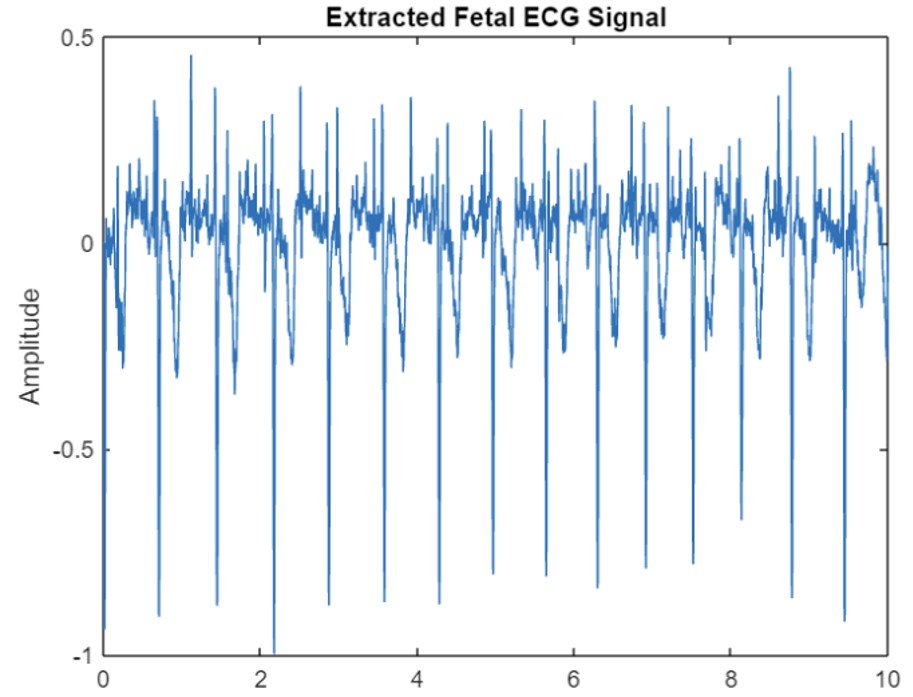Математичне моделювання електро-кардіосигналу плода для розробки програмного забезпечення для його достовірного виділення в комп'ютерних кардіодіагностичних системах
DOI:
https://doi.org/10.31498/2225-6733.49.2.2024.321353Ключові слова:
системи кардіодіагностики плода, сигнал ЕКГ плода, сигнали ЕКГ матері, метод та алгоритм виявлення, нормалізація, смуговий фільтр, адаптивний фільтр, фільтр низьких частот, фільтр високих частот, MATLABАнотація
Виділення сигналів електрокардіограми плода (фЕКС) є критично важливим компонентом сучасної перинатальної допомоги, що дозволяє здійснювати безперервний, неінвазивний моніторинг здоров'я плода. Такий підхід має важливе значення для раннього виявлення ускладнень, таких як гіпоксія плода, аритмії та інші потенційно небезпечні для життя стани. Традиційні методи моніторингу стану плода, включаючи допплерометрію та переривчасту аускультацію, часто не забезпечують достатньої роздільної здатності та безперервності, необхідних для своєчасного втручання, особливо в умовах обмежених ресурсів, де доступ до передових технологій є обмеженим. Для вирішення цих проблем у цьому дослідженні представлено інноваційний алгоритм для вилучення сигналів фЕКС з підвищеною точністю та надійністю. Алгоритм використовує структуровану послідовність кроків обробки, включаючи фільтрацію шуму, виявлення R-піків та вдосконалені методи фільтрації для ізоляції ЕКС плода від сигналів матері та шуму навколишнього середовища. Високочастотні та низькочастотні фільтри в поєднанні з нормалізацією забезпечують чіткість та узгодженість сигналу в різних умовах. Адаптивна фільтрація динамічно підлаштовується до коливань рівня шуму, підвищуючи стабільність, зберігаючи при цьому критичні характеристики форми хвилі, такі як зубець Р, комплекс QRS і зубець Т. Ці покращення є ключовими для точної оцінки частоти та варіабельності серцебиття плода, що дозволяє медичним працівникам виявляти ранні ознаки дистресу плода. Кількісний аналіз демонструє значне покращення співвідношення сигнал/шум (SNR), що підтримує надійну і точну діагностику. Можливості безперервного моніторингу в режимі реального часу відповідають меті Всесвітньої організації охорони здоров'я щодо зниження перинатальної смертності до менш ніж 12 на 1000 пологів до 2030 року. Крім того, його масштабованість та економічна ефективність роблять його перспективним рішенням для усунення диспропорцій у сфері пренатальної допомоги, особливо в країнах з низьким та середнім рівнем доходу. Це дослідження висвітлює трансформаційний потенціал вилучення фетального ехографа для покращення здоров'я матері та плоду в усьому світі, підвищення точності діагностики та сприяння рівності у сфері охорони здоров'я за допомогою інноваційних, доступних технологій
Посилання
World Health Organization. Birth defects. 2021. URL: https://www.who.int/news-room/factsheets/detail/birth-defects (дата звернення: 24.10.2024).
Global Stillbirth Policy Review – Outcomes And Implications Ahead of the 2030 Sustainable Development Goal Agenda / N. A. Mensah Abrampah et al. International Journal of Health Policy and Management. 2023. Vol. 12. Iss. 1. Pp. 1-11. DOI: https://doi.org/10.34172/ijhpm.2023.7391.
Aminu M., van den Broek N. Stillbirth in low- and middle-income countries: addressing the «silent epidemic». International Health. 2019. Vol. 11. № 4. Pp. 237-239. DOI: https://doi.org/10.1093/inthealth/ihz015.
Facility-based stillbirth review processes used in different countries across the world: a systematic review / Y. Y. Boo et al. eClinicalMedicine. 2023. Vol. 59. Pp. 1-17. DOI: https://doi.org/10.1016/j.eclinm.2023.101976.
Stillbirths: Contribution of preterm birth and size‐for‐gestational age for 125.4 million total births from nationwide records in 13 countries, 2000-2020 / Y. B. Okwaraji et al. BJOG: An International Journal of Obstetrics & Gynaecology. 2023. Pp. 1-12. DOI: https://doi.org/10.1111/1471-0528.17653.
Noninvasive fetal electrocardiography for the detection of fetal arrhythmias / J. A. Behar et al. Prenatal Diagnosis. 2019. Vol. 39. № 3. Pp. 178-187. DOI: https://doi.org/10.1002/pd.5412.
World Health Organization. Stillbirth. 2019. URL: https://www.who.int/health-topics/stillbirth (дата звернення: 20.10.2024).
A deep learning framework for noninvasive fetal ECG signal extraction / M. Wahbah et al. Frontiers in Physiology. 2024. Vol. 15. Pp. 01-13. DOI: https://doi.org/10.3389/fphys.2024.1329313.
Jaros R., Tomicova E., Martinek R. Template subtraction based methods for non-invasive fetal electrocardiography extraction. Scientific Reports. 2024. Vol. 14. № 1. DOI: https://doi.org/10.1038/s41598-024-51213-5.
Vilimkova Kahankova R., Martinek R., Bilik P. Non-invasive Fetal ECG Extraction from Mater-nal Abdominal ECG Using LMS and RLS Adaptive Algorithms. AECIA 2016 : Proceedings of the Third International Afro-European Conference for Industrial Advancement – AECIA 2016, Marrakesh, Morocco, 21-23 November 2016, pp. 258-271. DOI: https://doi.org/10.1007/978-3-319-60834-1_27.
World Health Organization. WHO recommendations: intrapartum care for a positive childbirth experience. 2018. URL: https://academic.oup.com/inthealth/article/11/4/237/5488741 (дата звернення: 20.10.2024).
Prasanth K., Paul B., Balakrishnan A. A. Fetal ECG Extraction Using Adaptive Filters. International Journal of Advanced Research in Electrical, Electronics and Instrumentation Engineering. 2012. Vol. 2. № 4. Pp. 1483-1487.
Франчевська Г., Хвостівський М., Дозорський В. Застосування адаптивної фільтрації для виділення електрокардіосигналу плоду на фоні завад. Актуальні проблеми сучасних технологій : зб. тез доповідей XI Міжн. наук.-практ. конф. молодих вчених та студентів, м. Тернопіль, 7-8 грудня 2022 р. С. 172-173.
Франчевська Г. Комп’ютеризована система розпізнавання фетальної електрокардіограми: магістерська робота. Тернопіль : Тернопільський національний технічний університет ім. І. Пулюя, 2020. 84 с. URL: https://elartu.tntu.edu.ua/bitstream/lib/33262/1/Master_Thesis_Franchevska.pdf.

##submission.downloads##
Опубліковано
Як цитувати
Номер
Розділ
Ліцензія

Ця робота ліцензується відповідно до Creative Commons Attribution 4.0 International License.
Журнал "Вісник Приазовського державного технічного університету. Серія: Технічні науки" видається під ліцензією СС-BY (Ліцензія «Із зазначенням авторства»).
Дана ліцензія дозволяє поширювати, редагувати, поправляти і брати твір за основу для похідних навіть на комерційній основі із зазначенням авторства. Це найзручніша з усіх пропонованих ліцензій. Рекомендується для максимального поширення і використання неліцензійних матеріалів.
Автори, які публікуються в цьому журналі, погоджуються з наступними умовами:
1. Автори залишають за собою право на авторство своєї роботи та передають журналу право першої публікації цієї роботи на умовах ліцензії Creative Commons Attribution License, яка дозволяє іншим особам вільно розповсюджувати опубліковану роботу з обов'язковим посиланням на авторів оригінальної роботи та першу публікацію роботи в цьому журналі.
2. Автори мають право укладати самостійні додаткові угоди, які стосуються неексклюзивного поширення роботи в тому вигляді, в якому вона була опублікована цим журналом (наприклад, розміщувати роботу в електронному сховищі установи або публікувати у складі монографії), за умови збереження посилання на першу публікацію роботи в цьому журналі.








